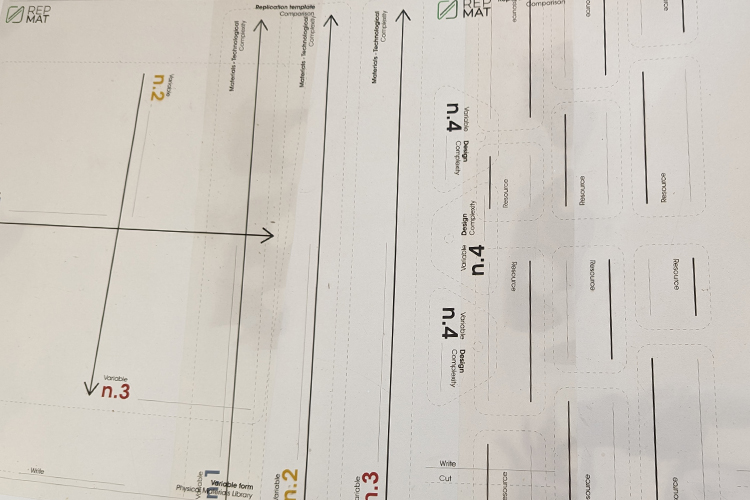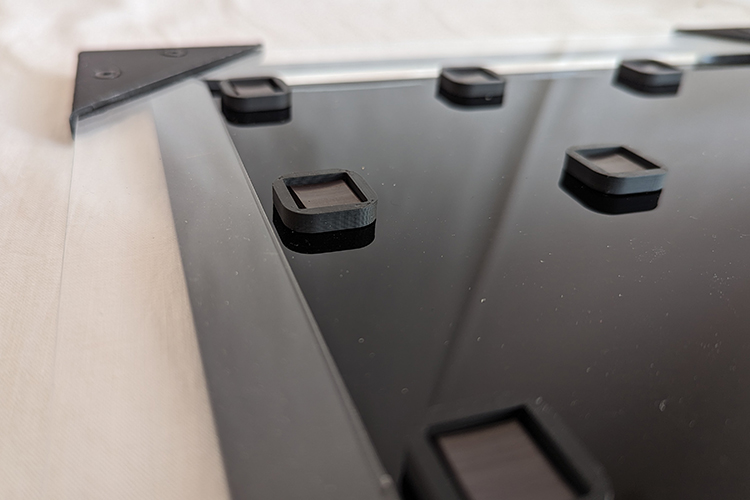How it works
RepMat.
Replicating Materials Library.
Generally, a Materials Library collects and showcases different samples, which are then classified according to one or more criteria. It allows the visualization and the comparison of different quantifiable and unquantifiable aspects of materials, reaching a broad audience of users, such as designers, engineers, technicians, companies.
RepMat has a physical and a virtual part, collecting both tangible objects (Physical Library) and textual information or pictures (Virtual Library). Both parts are divided in three main groups: the Recyclate Library, collecting the secondary raw materials, the Materials Library, collecting flat material samples, and the Product Library, collecting 3D sample parts, cut-offs, or scaled parts of potential applications.
The physical and virtual parts of the RepMat library are connected to one to each other, for instance, thanks to QR codes and labels. The physical library can be experienced by the users and give tangible examples connected to materials, technology, and potential applications. The virtual library provides the data, textual information, and links to deepen the knowledge, or explore some potential opportunities.
In this case, the virtual library represents a potential network to spread the knowledge on these topics and foster collaboration, while the physical library is made of distributed units replicated or created by users in local communities.
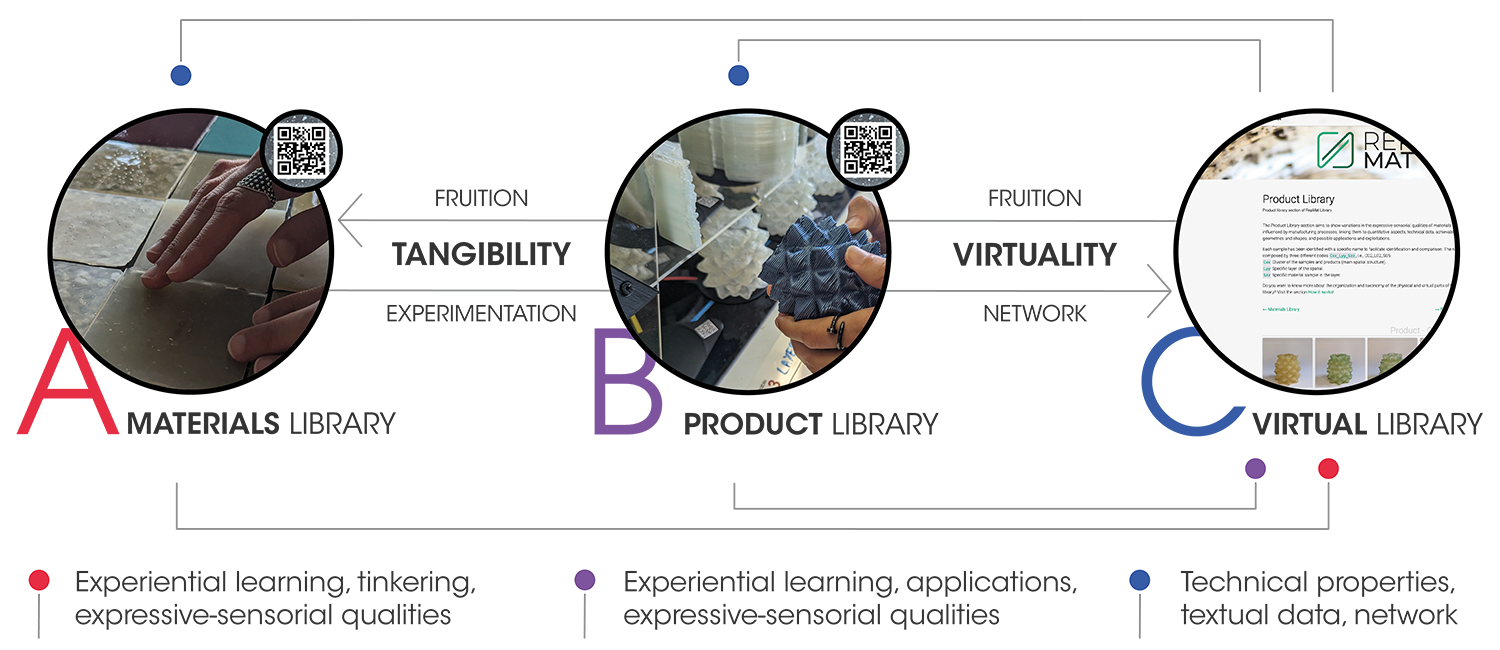
Divulgative and Experimental Uses.
RepMat aims to showcase new circular materials, technologies, and applications, as well as support practical experimentation and activities with them. These two goals correspond to two different uses, the divulgative use and experimental use, broadening the conventional connotation of materials libraries, transferring know-how and practical experience.
The divulgative use considers the RepMat library as a collection of samples and data to showcase existing solutions and potential applications, both virtually and physically. It can be used by practitioners, designers, students, technicians, and non-experts during educational activities, design projects, professional activities, or events and exhibitions. It aims to spread the knowledge of new materials and technologies, reaching a broader audience of users and giving an overview.
The experimental use widens the use of the RepMat library by adding the practical activities to create the sample collection and the library itself, shared through the virtual part. It can be used by practitioners, designers, students, and technicians during educational activities, professional projects, and research practices. It aims to create and spread new knowledge through a direct approach, especially know-how, tacit, and experiential knowledge useful for their exploitation in real projects.
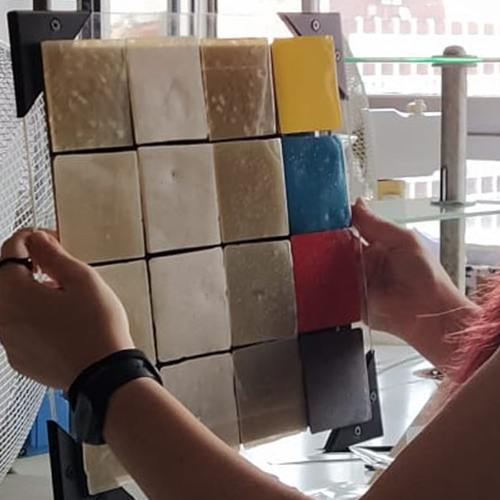
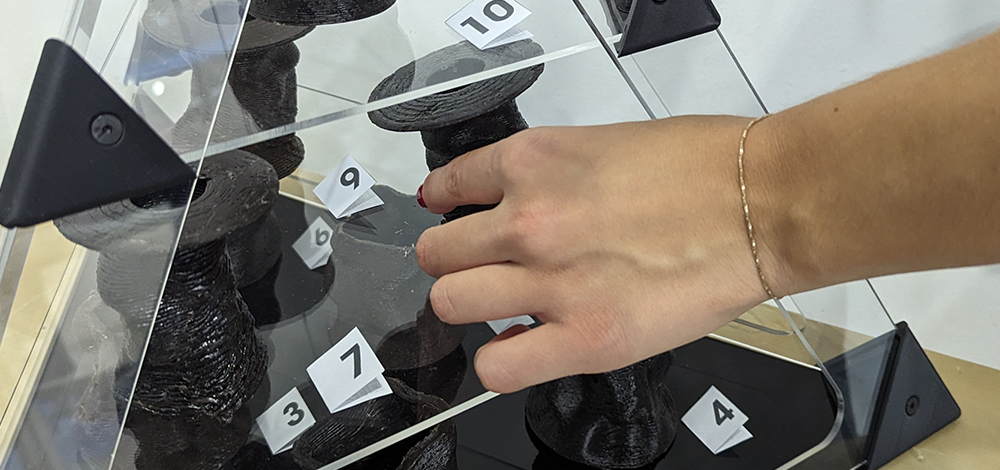

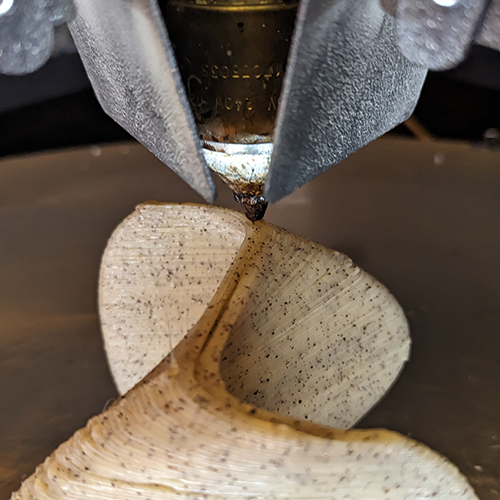
Replicating Materials Library.
RepMat can be freely used and replicated to investigate and explore different materials and technologies for educational and research purposes. The library model is released under the GNU General Public License (GPL) 3.0. More information about the license can be found here.
The organization, or taxonomy, of the physical parts of the library is based on a two-variable system (Recyclate Library), a three-variable system (Materials Library) and a four-variable system (Product Library). In each case, the user can set the variables to explore and the specific parameters, defining the list of samples to fabricate for each set. The physical structures of the library can be created by the users using digital or craft tooling, such as lasercutting or cutters.
Do you want to create your own RepMat unit? Check this link to download the replication templates and files.
Disclaimer: The authors and creators are not responsible for improper uses of the Materials Library System during its replication, modification, and use.
